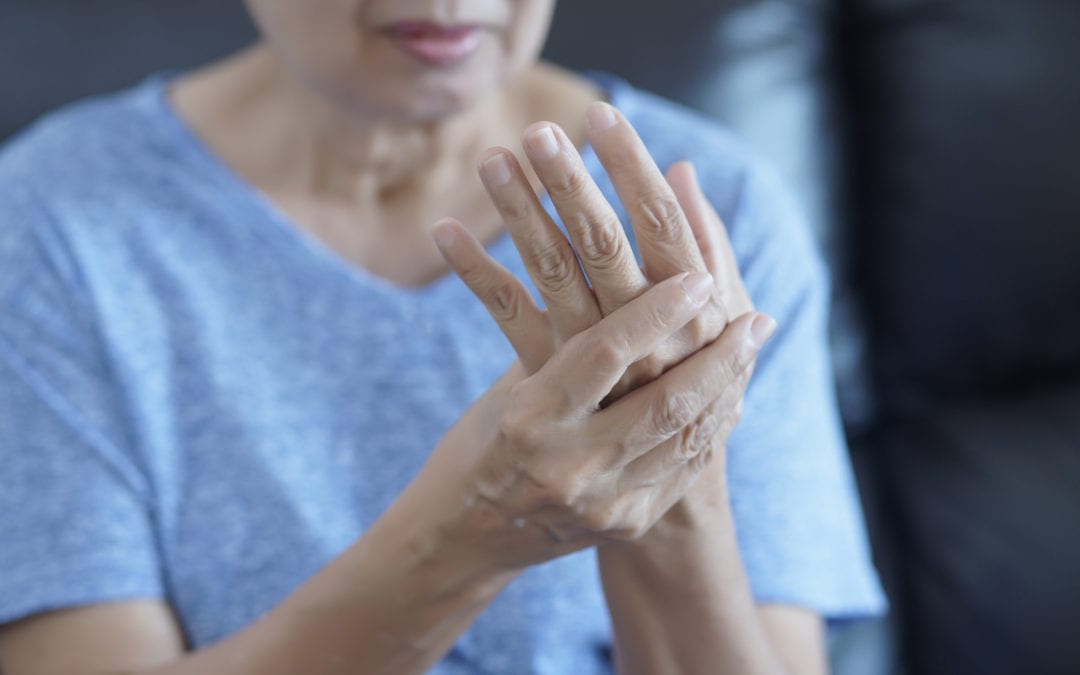Read Time: 4.5 minutes
TL;DR
- Arthritis is a painful disorder that affects the joints. Rheumatoid arthritis causes chronic joint inflammation and is an autoimmune disorder with symptoms that tend to come and go and increase over time.
- Some of the symptoms include limping, fatigue, joint swelling, joint pains, morning stiffness, loss of range and motion, joint redness and several more.
- Each person with arthritis experiences the disease in a different way and symptoms often change from day to day. There is no known cure, but proper treatment helps keep the disorder under control.
Arthritis and Joint Pain
Arthritis is a painful disorder that affects the joints. Knowing the common signs and symptoms of the condition can help lead to earlier diagnosis and treatment. Help yourself or loved ones deal with arthritis by learning to watch for common symptoms.
What is Arthritis?
Rheumatoid arthritis causes chronic joint inflammation. It is an autoimmune disorder with symptoms that tend to come and go and increase over time. Flare-ups are active periods of arthritis and remission refers to inactive periods. Each person with arthritis experiences the disease in a different way and symptoms often change from day to day. There is no known cure, but proper treatment helps keep the disorder under control.
Signs and Symptoms of Arthritis
Although each person may experience different symptoms in varying degrees, the following are common arthritis signs:
- Fatigue — A common symptom of arthritis, fatigue may be present at any time but is especially common during flare-ups. The body reacting to poor sleep, inflammation, medications and anemia produces a lack of energy that can impact many areas of life. Fatigue may come and go from day to day and often precedes other arthritis signs.
- Morning Stiffness — Lingering stiffness is a frequent early sign of arthritis. It’s most common in the morning, but can develop during any period of inactivity such as a nap or prolonged sitting. Stiffness in the joints is also common, but can happen at any time during periods of rest or activity.
- Joint Tenderness — Joints impacted by arthritis are often tender due to inflammation irritating the nerves in the area. External pressure on the joint causes immediate pain. Joint tenderness is one reason that sleeping is often difficult during flare-ups of arthritis.
- Joint Pains — Pain in the joints in common with arthritis. Inflammation in the joint during flare-ups irritates and stretches the capsule around the joint causing pain. Joint pains can also occur during periods of remission if the joint is already damaged due to previous flare-ups. Attempting to use the joint can trigger intense pain.
- Joint Swelling — One of the more common arthritis signs, joint swelling can range from minimal to severe. Sometimes it’s difficult to see while at others it’s quite obvious, but people suffering from arthritis generally can tell when their joints are swollen. The swelling can make it difficult to wear rings or move joints.
- Joint Warmth — Active inflammation due to arthritis causes joint warmth. This is often one of the key signs of active periods of arthritis and is something doctors closely monitor. Joint warmth may be present without other common signs, like joint redness or swelling, and it generally resolves quickly as the disorder responds to treatment.
- Joint Redness — Inflammation during arthritis flare-ups can also cause joint redness. As inflammation builds, it can cause nearby capillaries in the skin to dilate or widen which produces redness of the skin. This doesn’t occur in all joints affected by arthritis because mild inflammation usually isn’t enough to impact the capillaries.
- Many Joints Affected — Arthritis typically occurs in more than one joint in the body. The small joints in the hands, wrists and feet are most frequently impacted, but ankles, knees, hips, elbows and shoulders are also common. Polyarthritis is the term used to describe arthritis affecting four or more joints in the body. Occasionally, only one or a few joints are affected; this is more common in children with arthritis.
- Loss of Range of Motion — During flare-ups, swelling and inflammation can limit the range of motion in affected areas making it difficult to straighten or bend the joint. Range of motion often returns as arthritis enters remission, but long-standing arthritis can result in joint damage that restricts range of motion permanently.
- Limping — When arthritis attacks the joints in the feet, ankles, knees or hips, it can cause a noticeable limp. Limping is usually caused by joint swelling, pain and loss of motion in these areas.
- Joint Deformity — Over time, arthritis can lead to joint deformity. Unchecked inflammation in the joints can cause erosion of bone and cartilage and loosening of the ligaments. This is one of the reasons early detection is important; discovering the disorder quickly and getting proper treatment helps keep inflammation under control to minimize permanent joint damage and deformity.
- Loss of Joint Function — As flare-ups cause tenderness, swelling and pain in the joints, loss of function results. This can lead to loss of dexterity and grip, diminishing coordination and disability.
- Impacts on Both Sides of the Body — Arthritis is often symmetric, meaning it is similar on both sides of the body. For example, if the thumb is affected on one side, it’s also likely affected on the other. Multiple joints on both sides of the body are commonly involved in active periods of the disorder.
- Anemia — Chronic inflammation in the joints impacts other parts of the body, including the blood. It often triggers the bone marrow to release fewer red blood cells leading to anemia during flare-ups. This usually corrects itself as inflammation dies down.
- Fever — Low-grade fevers can also develop due to arthritis inflammation.
If you notice any of these common signs of arthritis, it’s important to see your doctor right away to get a proper diagnosis. Although there isn’t a known cure for arthritis, early diagnosis and treatment help reduce pain and inflammation, increase joint function and minimize joint damage and deformity.

